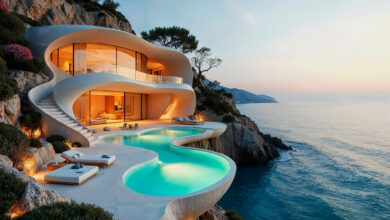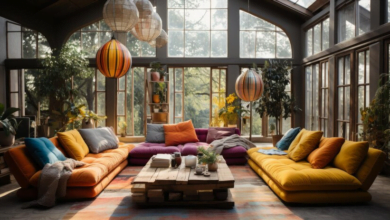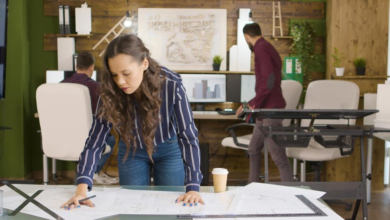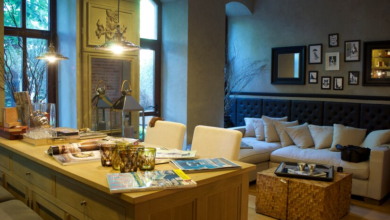Loft-Style Interiors: An Industrial Vibe in Residential Living
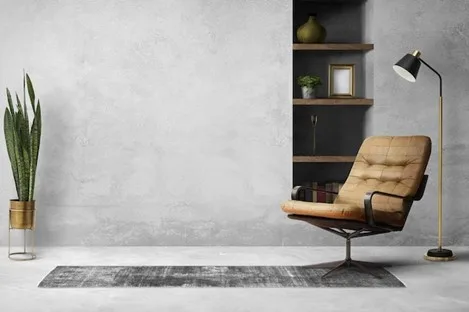
One design style that has recently been a common favorite is the realm of loft-style interiors. If you’re intrigued by spaces where raw meets refined, industrial meets chic, and spaciousness meets coziness, then you’re in for a treat. Today, we’re looking into everything about loft-style interiors – their distinctive characters, unique features, and the magic they bring to any living space.
What are Loft-Style Interiors?
A loft ‘literally’ means an attic or gallery. It is a type of living space that is typically characterized by its open layout, high ceilings, and industrial aesthetic. Loft-style interiors are about repurposing abandoned industrial buildings such as warehouses, factories, or mills, into live-work spaces.
Imagine yourself stepping into a vast, cavernous space, once bustling with the echoes of machinery and industry, now transformed into a place of creativity and comfort. This is the essence of loft-style interiors. Think exposed brick walls, concrete floors, and exposed ductwork – all characteristics of the industrial aesthetic that defines loft living.
A Brief History of Loft-Style Design
Born in the vibrant neighborhoods of New York City’s SoHo district during the 1950s, loft living quickly gained popularity among artists and bohemians seeking spacious yet affordable accommodations. As the demand for loft living grew, urban professionals and families began to recognize the potential of these industrial-inspired interiors, leading to a resurgence of interest in this design style.
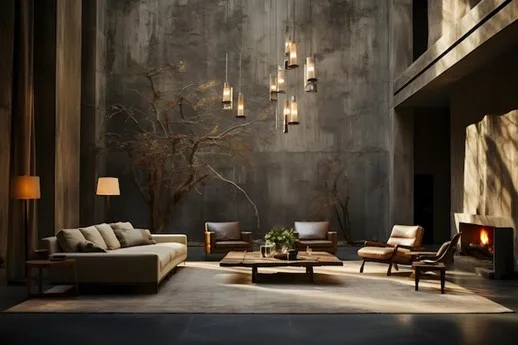
8 Key Characteristics of Loft-Style Design
Let’s look into a comprehensive list of features for a loft-style interior:
1. Open Plan Concept:
Loft-style design is known for its spacious, open plan layouts, devoid of unnecessary walls or partitions. This design choice encourages a sense of fluidity and connectivity between different spaces. Blending the living, dining, and cooking areas, makes the space feel larger and more welcoming.
2. High Ceilings:
One of the most prominent features of loft-style interiors is their high vaulted ceilings. Usually, these ceilings are higher than those found in traditional homes, often reaching heights of 10 feet or more. High ceilings not only create a sense of opulence but also allow enough room for lofted sleeping or storage areas, maximizing vertical space.
3. Industrial Materials:
Materials primarily used are exposed brick, coarse stucco, concrete, and metal. These industrial materials are often left rough and unfinished, add texture, character, and a sense of authenticity to the space. Exposed brick walls, for example, take us back to the industrial past, while concrete floors provide a durable and low-maintenance surface.
4. Large Windows:
Tall windows are a defining feature of loft-style design, allowing plenty of natural light to flood in. These windows not only brighten up the interior but also provide sweeping views of the surrounding landscape. Coupled with soaring ceilings and unobstructed sightlines, this natural light pouring in is an expert at enhancing any space. It promotes airiness and improves mood, productivity, and overall well-being.
5. Color Schemes:
In loft-style interiors, color schemes feature neutral palettes, allowing industrial elements and natural materials to stand out. Monochromatic schemes, mainly white, grey, and black, offer a modern look, while natural wood tones bring warmth. Accent colors like deep blues or other bold pops of color can inject personality into the space.
6. Minimalist Furniture Options:
As for furniture, a minimalist design approach, with pieces often featuring industrial-inspired elements such as metal frames and leather upholstery. Versatile seating options ensure adaptability to different forms, like oversized armchairs or sculptural coffee tables that anchor the room. In loft-style design, the interplay of color and furniture is important to make sure the space is functional so you can achieve your desired aesthetic.
7. Lighting:
Lighting fixtures are an integral part of this design style. Bold, statement lighting fixtures, such as oversized pendant lights or industrial-style chandeliers, are often used to illuminate key areas and give that traditional loft feel. Hanging lights add a dynamic look to the interior while draping string lights alongside exposed beams create that loft-style atmosphere. Edison bulbs also contribute to the industrial design effect.
8. Loft-Style Décor:
Vintage finds and industrial artifacts are the finishing touches for your interior. Vintage signage, old machinery, and antique factory stools are repurposed as stylish accents. Textiles like rugged leather upholstery, distressed denim, and raw linen bring comfort and texture, while soft furnishings in rich, earthy tones or bold patterns add interest to any interior such as steampunk home decor. Adorn your floors with a vintage-inspired rug, or prominently display framed artwork on an eclectic gallery wall to get that final look you’re looking to achieve.

How do I envision a loft-style interior?
As I step into the loft-style interior, I’m immediately struck by its open, industrial charm. I see steel beams repurposed as architectural accents, and reclaimed wood flooring, with its rich patina and subtle imperfections. Instead of hiding away ductwork, it’s proudly displayed as a design element, highlighting the industrial heritage of the space.
The imperfections here are not flaws to be hidden but rather celebrated as part of the charm. The vintage factory light fixtures cast a warm glow while the repurposed machinery is transformed into a functional art piece. Industrial artefacts are displayed and every detail invites exploration and discovery. The space is filled with lasting memories and a sense of nostalgia as I continue to gaze.
Final Words
Loft-style interiors have evolved into a globally celebrated design trend, coveted artistic expression, and communal living. By combining these key characteristics, you can create inviting and inspiring living spaces that capture the essence of modern urban living and keep up with industrial design trends. Whether nestled in a repurposed warehouse or a contemporary urban loft, the beauty of a loft-style interior is undeniable.
Sources: Bareo, Chezaro
